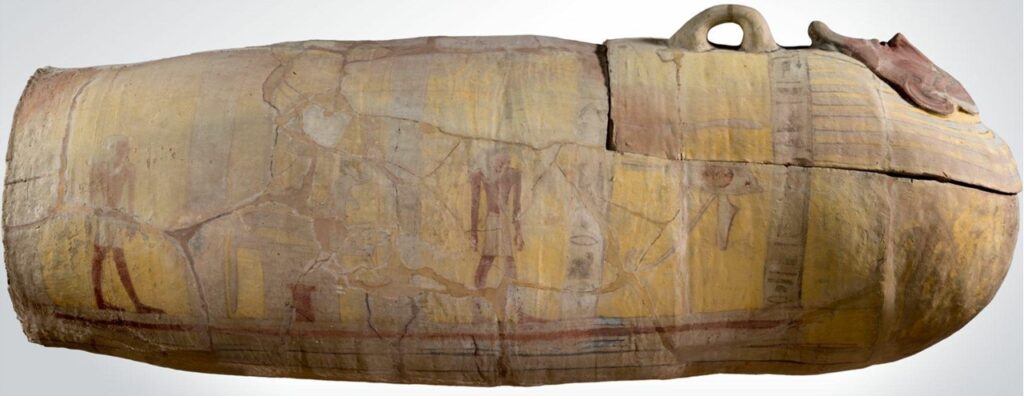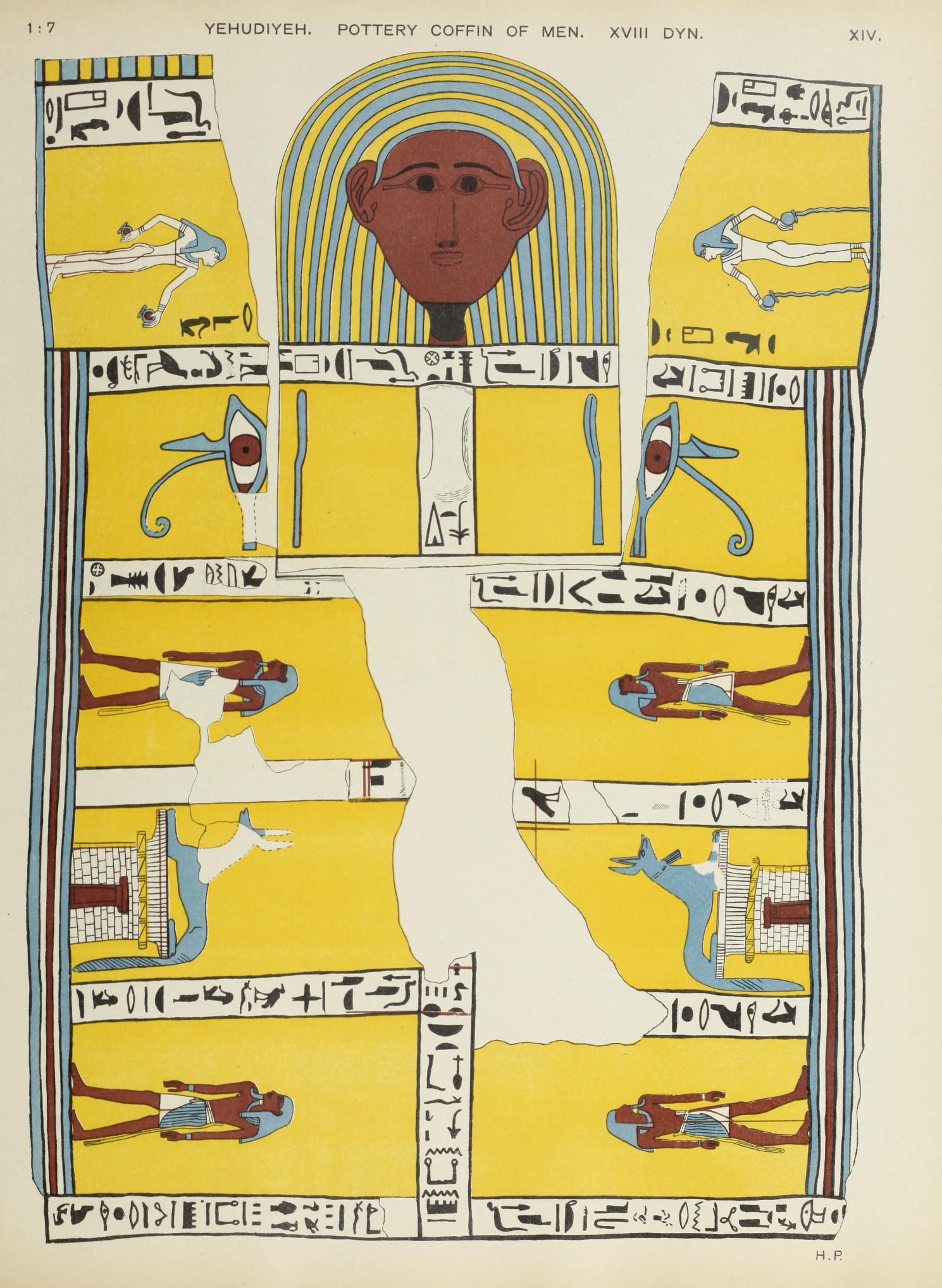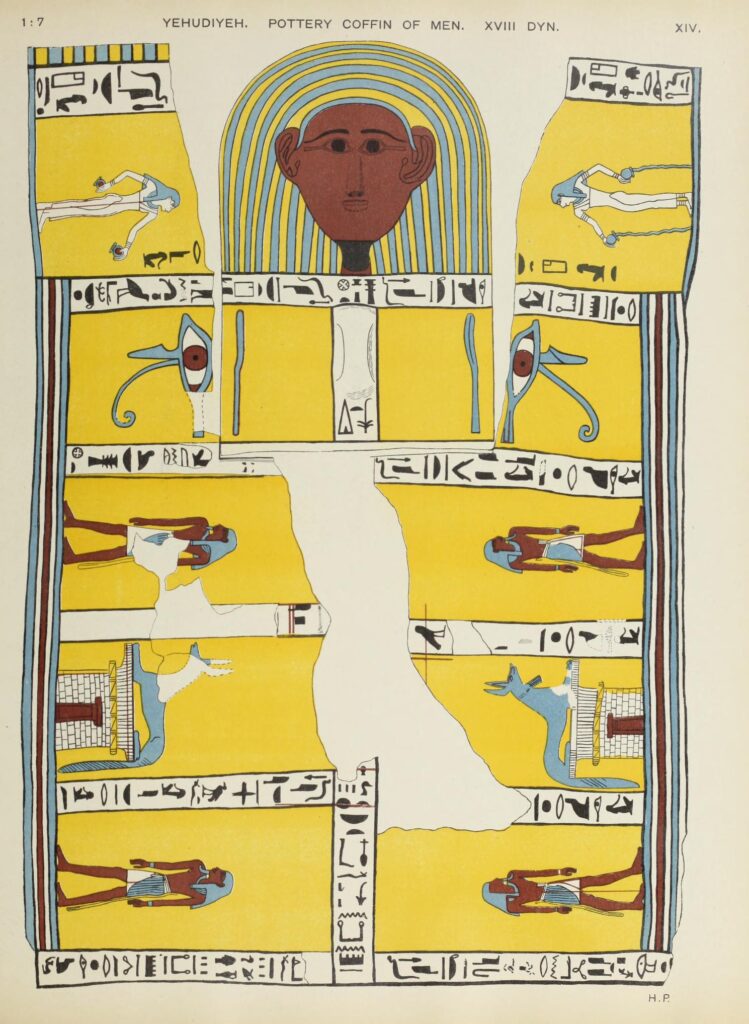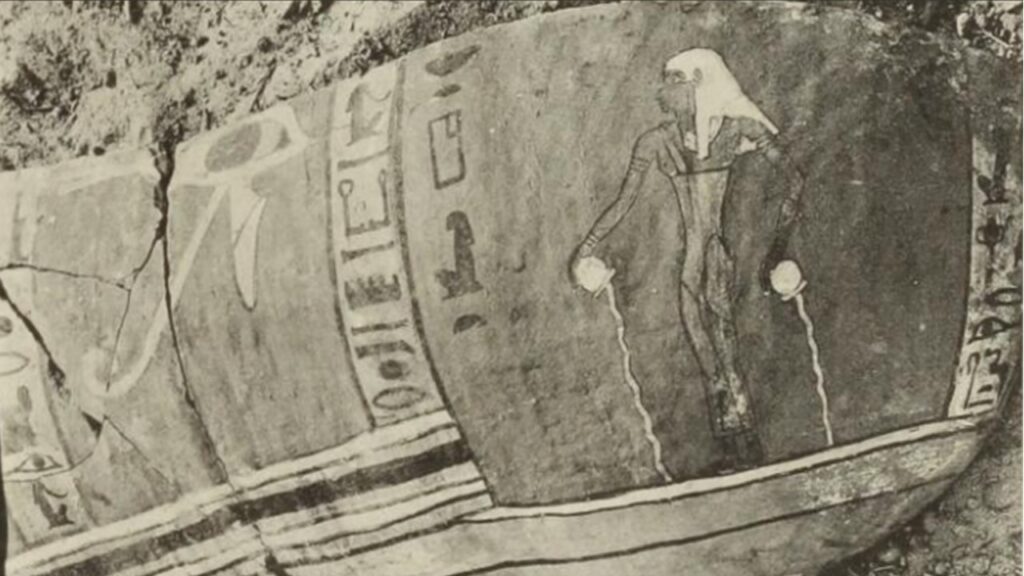Images in Egyptian art were much more than just designs, specially in funerary sphere. They were a tool for achieving a goal and their effectiveness was out of doubt.
Moreover, the artist also had to choose their location on the surface for creating a coherent composition.
DISTRIBUTION OF THE IMAGES IN THE CLAY COFFIN OF MEN.
Few things are random in Egyptian art and in this coffin the artist took special care about the distribution and location of the iconography.
On the other had, the coffin of Men had barely texts. We just read some concise lines of hieroglyphs, which served to delimitate every scene or image. Thanks to it, we can see three well differentiated areas: body, shoulders and head.
1. Body: The Four Sons of Horus and Anubis.
Egyptian art depicted usually the Four Sons of Horus as follows: Amset with human head, Hapy with baboon head, Duamutef with jackal head and Qebehsenuef with falcon head. However, in the clay coffin of Men, the artist decided forthem a complete anthropomorphic depiction, also their heads.
Furthermore, these four deities are symmetrically spread over the surface of the coffin: two on either side of Men’s body. In addition, we have to notice also that they are facing to the dead’s face. This detail does not seem to be unintentional.
Between two of the Sons of Horus, at every side, the artist included an image of the god Anubis as the jackal recumbent on the top of a shrine. In this way, the artist got something essential in Egyptian art: symmetry and balance in the composition.

2. Shoulders/Neck: Udjat Eye.
The Udjat Eye is a typical icon of resurrection in Ancient Egypt, because it symbolises the recovery of the Eye of Horus, the full moon, the light in the dark sky. For that reason, it is also closely related to the resurrection of god Osiris, because the recovery of the eye meant the final resurrection of Osiris as king of the Underworld. Therefore, the Udjat Eye reveals also the presence of Osiris in his new existence.
3. Head: Isis and Nephthys.
At both sides of the head of the mummy appear the two professional mourners of Osiris. Isis at the right side of Men (viewer’s left side) and Nephthys at the left side of Men (viewer’s right side) are not kneeling in a passive attitude, but standing and presumably performing the mourning rite in the benefit of the corpse.
It is also important to look at their orientation, because both are standing and facing to the feet of Men, that is, in the direction of the Four Sons of Horus.
No image is out of tune, because all of them are very usual images in the funerary Egyptian art, and they are connected with the Men’s resurrection.
Nevertheless, the importance of this iconography is not only in what those images evoke, but also in how they were arranged on the surface of the coffin.
As we have seen their distribution reaches a complete covering of the body, and following basic principles of Egyptian art: ordering, symmetry and balance.
The other question is: Why did the Egyptian artist chose location of those images on the coffin? We have mentioned already some clues, But we will present a logical hypothesis soon…



Trackbacks/Pingbacks